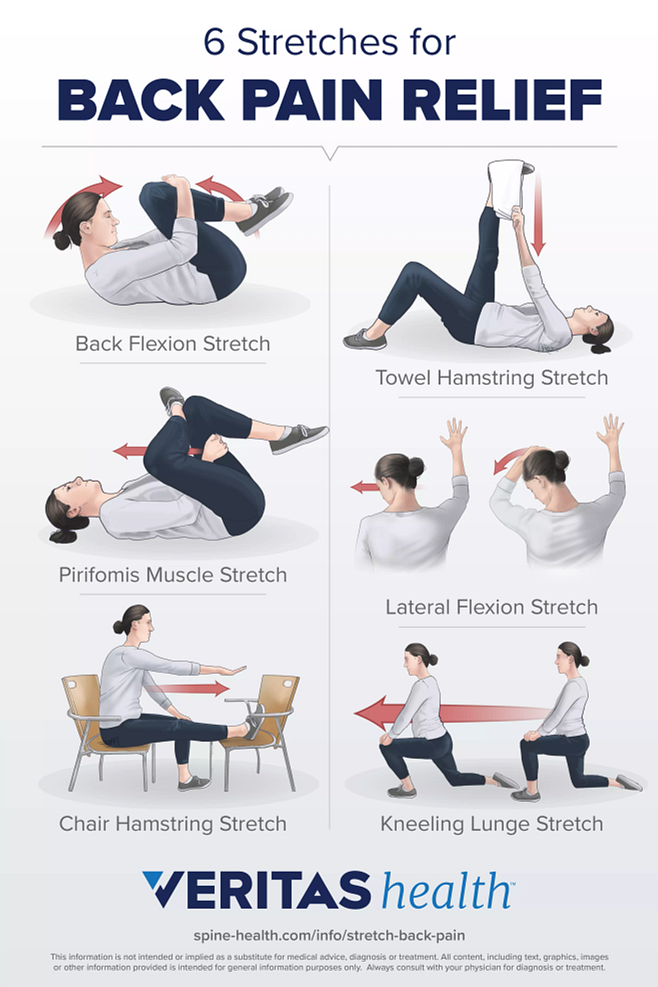Discover the surprising natural remedies that will relieve lower back pain in minutes – you won’t believe number seven!
Table of Contents
- Introduction: Feeling Better in Your Backyard
- Understanding Lower Back Pain
- When Twisting and Turning Hurts: Common Back Issues
- Breathe Easy: Quick Comfort Measures
- Tools for The Tough Spots: Using Lumbar Support
- Ouch! What if It’s Really Sharp Pain?
- What Can Adults Do to Help Kids with Lower Back Pain?
- Exercise: Fun and Good for Your Back
- Time to Visit the Doctor: When Back Pain Doesn’t Go Away
- Conclusion: Keeping Your Back Happy!
- Frequently Asked Questions (FAQs)
Introduction: Feeling Better in Your Backyard
Have you ever felt a little ache in your lower back after playing outside or sitting for a long time? That’s what we call lower back pain, and it’s quite common, especially among kids who love to run around and play. But don’t worry, we’re here to help you understand how to take care of your back so you can keep having fun without any discomfort. Let’s explore some quick and easy ways to soothe lower back pain so you can feel better in your own backyard.
Lower back pain can happen for various reasons, from muscle strain to other more serious conditions like kidney stones or a slipped disc. It’s essential to pay attention to your back and take steps to care for it, just like you would any other part of your body. Are you ready to learn how to ease that pesky ache in your lower back? Let’s get started!
Understanding Lower Back Pain
Lower back pain is a common issue that many people, including kids, might experience. It refers to the discomfort or ache felt in the area of the back located below the ribcage and above the hips. When you have lower back pain, it can feel like a dull ache or a sharp pain that makes it hard to move comfortably.
What’s Lower Back Pain?
The lower back, also known as the lumbar region, is the part of your back that bends and flexes the most. It’s made up of muscles, bones, nerves, and discs that all work together so you can bend, twist, and move around. When these parts get strained due to injury, overuse, or poor posture, it can lead to lower back pain.
Common Causes of Lower Back Pain
One of the most common reasons for lower back pain is muscle strain. This usually happens when you do a movement that your body isn’t used to, like lifting heavy objects or playing a new sport without warming up properly. Straining your muscles can cause them to become sore and inflamed, leading to lower back pain.
When Twisting and Turning Hurts: Common Back Issues
In this section, we will explore specific conditions that can affect the lower back and cause pain, such as a slipped disc, sciatica, and spinal stenosis.

Image courtesy of via Google Images
What’s a Slipped Disc?
A slipped disc happens when the soft cushion-like material between the vertebrae in your spine pushes out of place. This can put pressure on the nerves, causing pain in the lower back. It’s like a jelly-filled doughnut squishing out! Ouch!
Dealing with Sciatica
Sciatica is when the sciatic nerve, which runs from your lower back down your legs, gets irritated or compressed. This can lead to pain, numbness, or tingling in the back, hips, and legs. It’s like a tiny messenger getting stuck in a traffic jam and causing a lot of discomfort!
Understanding Spinal Stenosis
Spinal stenosis is a condition where the spaces within your spine narrow and put pressure on the spinal cord and nerves. This can cause pain, weakness, or numbness in the lower back and legs. It’s like your spine getting squeezed in a tight hug!
Breathe Easy: Quick Comfort Measures
When your back is feeling achy, there are some simple things you can do to help ease the discomfort. Here are a few quick comfort measures that might make a big difference:
Taking a Break
If your lower back is hurting, it might just need a little break. Resting for a while can help your muscles relax and reduce the pain. So, find a comfy spot to sit or lie down, and give your back a break.
Gentle Moves
Sometimes, gentle movements can help ease the stiffness in your back. Try slowly bending forward or stretching gently from side to side. Just be careful not to overdo it – simple, easy movements can work wonders!
Tools for The Tough Spots: Using Lumbar Support
Lower back pain can sometimes make it hard to sit, stand, or even play. But there’s a clever trick to make things easier – lumbar support! Let’s find out how this magical tool can help us feel better.

Image courtesy of via Google Images
What is Lumbar Support?
If you’ve ever felt like your lower back could use a little extra help, lumbar support is here to the rescue! It’s like a gentle hug for your spine, keeping it in a comfy position. This support can be in the form of a cushion, a special chair, or even a rolled-up towel placed behind your back when you sit.
Types of Lumbar Supports
There are different kinds of lumbar support out there, each designed to give you the best comfort. You can find cushions that you can attach to your chairs or even special chairs that already have built-in lumbar support. Whatever you choose, the aim is the same – to keep your back in the right position and reduce any pain or discomfort.
Ouch! What if It’s Really Sharp Pain?
Have you ever experienced a sharp pain in your lower back that just won’t go away? Sometimes, this kind of pain can be a sign of kidney stones. Kidney stones are tiny, hard deposits that can form in your kidneys and cause a lot of pain when they pass through your urinary tract. If you notice this type of sharp pain, it might be a good idea to talk to a grown-up about it so they can help you get the right care.
When It Might Be a Slipped Disc or Sciatica
Another reason for sharp lower back pain could be a slipped disc or sciatica. A slipped disc happens when the cushion-like disc between the bones in your spine bulges out of place and presses on the nerves. This can cause intense pain, especially when moving. Sciatica, on the other hand, occurs when the sciatic nerve, which runs down your back into your legs, gets irritated or pinched. Both of these conditions can be serious and may need a doctor’s attention to get better. Make sure to let a grown-up know if you’re experiencing sharp pain in your back so they can help you find the right solution.
What Can Adults Do to Help Kids with Lower Back Pain?
One important way adults can help kids with lower back pain is by teaching them about good posture. This means reminding them to sit up straight and not slouch when sitting at a desk or table. Good posture can prevent strain on the back and reduce the risk of developing lower back pain.
| Method | Description |
|---|---|
| 1. Apply ice pack | Applying an ice pack to the lower back for 15-20 minutes can help reduce inflammation and numb the pain. |
| 2. Heat therapy | Using a heating pad or hot water bottle can help relax muscles and improve blood flow to the affected area. |
| 3. Stretching exercises | Performing gentle stretches can help improve flexibility and reduce tension in the lower back muscles. |
| 4. Over-the-counter pain medication | Taking over-the-counter pain relievers such as ibuprofen or acetaminophen can help alleviate lower back pain. |
| 5. Good posture | Maintaining good posture throughout the day can help prevent and alleviate lower back pain. |

Image courtesy of via Google Images
Warmth and Comfort
Another way adults can assist children with lower back pain is by providing warmth and comfort. Applying a warm pack to the sore area can help relax the muscles and alleviate pain. The gentle heat can soothe the back and make it feel better. It’s a simple and effective way to offer comfort to a child experiencing lower back pain.
Exercise: Fun and Good for Your Back
When it comes to taking care of our backs and preventing lower back pain, exercise is a fantastic way to keep our spines strong and healthy. Not only can exercise be fun, but it also plays a crucial role in soothing and preventing discomfort in our backs.
Fun Activities That Strengthen Your Back
So, what kind of exercises can help you keep your back in top shape? Engaging in activities like swimming, dancing, or even playing your favorite game that involves moving around can be incredibly beneficial for your back. These exercises help to strengthen the muscles in your back, making it less likely for you to experience pain in the future.
Another fun and effective exercise for your back is yoga. Yoga involves various poses and stretches that not only improve flexibility but also work to strengthen the muscles that support your spine. In fact, some yoga poses are specifically designed to target and alleviate back pain.
When to Take It Easy
While exercise is vital for keeping your back strong, it’s essential to know when to take a break. If your back is feeling particularly sore or uncomfortable, it may be best to avoid activities that put too much strain on it. Listen to your body – if an exercise is causing more pain, stop and give your back a chance to rest and heal.
Always remember to start any new exercise gently and slowly. Rushing into intense physical activity can sometimes do more harm than good. Take your time to build up your strength and gradually increase the intensity of your workouts to avoid straining your back.
Time to Visit the Doctor: When Back Pain Doesn’t Go Away
There are times when back pain doesn’t go away on its own, and that’s when it’s crucial to seek professional help. Let’s explore when it might be necessary to visit the doctor for persistent lower back pain.

Image courtesy of via Google Images
Warning Signs That You Need a Doctor
If you experience severe pain in your lower back that doesn’t improve with rest, or if you feel numbness or tingling in your legs, it could be a sign that something more serious is going on. Additionally, if your back pain follows a fall or injury, it’s important to see a doctor to rule out any underlying issues that may require treatment.
What Will the Doctor Do?
When you visit a doctor for back pain, they will first ask you questions about your symptoms and conduct a physical exam to assess your range of motion and any areas of tenderness. They may also order tests like X-rays, MRIs, or CT scans to get a better look at your spine and determine if conditions like a slipped disc, spinal stenosis, or sciatica are causing your pain.
In some cases, the doctor may recommend treatments such as physical therapy, medication, or even minimally invasive procedures to alleviate your back pain and improve your quality of life. Remember, it’s always better to address persistent back pain early on to prevent any potential complications down the road.
Conclusion: Keeping Your Back Happy!
Lower back pain can be a real nuisance, but there are simple ways to prevent it and soothe it when it strikes. By taking care of your back and knowing when to seek help, you can keep your spine feeling happy and healthy!
Preventing Lower Back Pain
To keep your back in tip-top shape, remember to practice good posture when sitting and standing. This means sitting up straight, shoulders back, and feet flat on the floor. Avoid slouching or hunching over, as this can strain your back muscles and lead to pain.
Soothing Lower Back Pain
When your back is feeling achy, it’s essential to give it some TLC. Resting and gentle movements can help relieve tension and improve blood flow to the area, promoting faster healing. Remember not to overdo it and listen to your body’s signals.
Seeking Help When Needed
If your lower back pain persists or becomes severe, it’s crucial to seek help from a healthcare professional. They can assess your symptoms, diagnose any underlying issues like a slipped disc or sciatica, and provide the right treatment to help you feel better.
By taking these simple steps to care for your back, you can enjoy a life free from the discomfort of lower back pain. Remember, your spine is essential, so treat it with the love and attention it deserves!
Frequently Asked Questions (FAQs)
What is the fastest way to relieve lower back pain?
If your lower back is feeling sore, one quick way to ease the pain is by gently lying down on a comfortable surface and putting a heat pack on the achy area. The warmth can help relax your muscles and make you feel better for a little while.
Can kids get problems like slipped discs or sciatica?
Yes, even kids can sometimes have issues like slipped discs or sciatica, although it’s not very common. These conditions can be caused by injuries or other health problems. If you ever feel a sharp pain in your back or leg that doesn’t go away, make sure to tell a grown-up so they can help you figure out what’s going on.
What should I avoid doing if I have lower back pain?
If your lower back is hurting, it’s best to avoid activities that put a lot of strain on your back, like lifting heavy objects or sitting in one position for too long. It’s also a good idea to skip activities that involve quick or jerky movements that might make the pain worse.





